Season 2
The Spaniards first returned to Cempoala where they gathered resources for their journey and took advice from the natives as to which route to follow: The cacique of Cempoala recommended taking the eastern road to Xalapa and from there to proceed to Tlaxcala, land of the fiercest enemies of Moctezuma.
Link to the Spanish-Tlaxcala Alliance
They departed on August 16th 1519 and headed east towards Jalapa and Xico and started the ascent of the Sierra Madre Oriental (Mexico’s eastern mountain range).
They continued their journey eastward and passed through a high plateau with arid and cold landscapes in the upper parts of the Sierra. After three days of hunger, extreme cold and heavy rains, the landscape gradually changed to woodlands and finally they reached the town of Zacatula (Zautla). They were very tired, weak and starving and some of the natives in his army that came from tropical lands died of the intense cold. Back in those days, Zacatula was an important, well-resourced settlement and the Spaniards could recover their strength. Cortés asked the local cacique, a fat and shaky person named Olíntetl, if he was a vassal of Moctezuma, to which he replied: “What? Is there anyone who is not his vassal?”
Olíntetl was terrified of the reaction Moctezuma would have when he learned that Zacatula received these strangers without his permission, but Cortés told him that he came in the name of a more powerful ruler, to whom even Moctezuma would have to submit. At this meeting the Spaniards heard for the first time of the grandeur of the Aztec capital: México-Tenochtitlán, a city located in the middle of a lake with canals, large roads and endless luxuries.
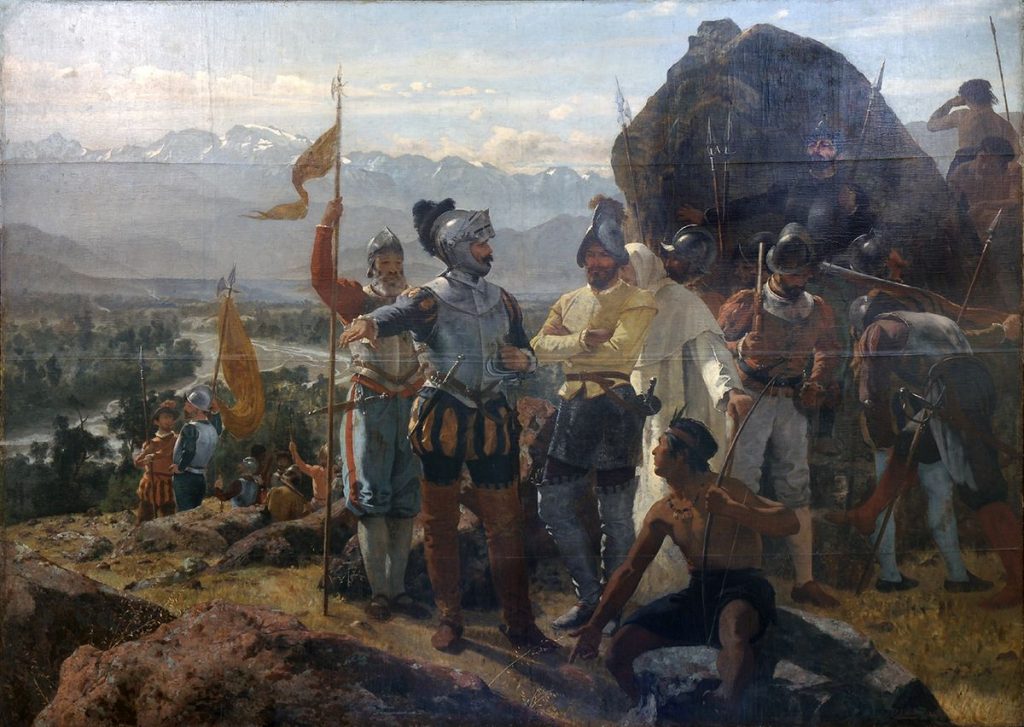 They continued their journey to Tlaxcala, and passed through the lands of Ixtacamaxtitlán where they saw a large wall made of rocks that represented the border with Tlaxcala. Today, nothing of this wall remains and the memory of its builders seems to be lost in history. After inspecting the area, the Spaniards crossed the wall and continued to Tlaxcala; however, they soon found a group of armed men waiting to fight them. Cortés sent some horsemen to attack and the hostile soldiers started to run, but they suddenly turned around and attacked the horsemen, killing two horses: the natives now realized they could defeat them…
They continued their journey to Tlaxcala, and passed through the lands of Ixtacamaxtitlán where they saw a large wall made of rocks that represented the border with Tlaxcala. Today, nothing of this wall remains and the memory of its builders seems to be lost in history. After inspecting the area, the Spaniards crossed the wall and continued to Tlaxcala; however, they soon found a group of armed men waiting to fight them. Cortés sent some horsemen to attack and the hostile soldiers started to run, but they suddenly turned around and attacked the horsemen, killing two horses: the natives now realized they could defeat them…
Soon after, more forces from Tlaxcala appeared wearing the war banner of Tlaxcala with a white crane, but their attacks were not coordinated among their captains and they were unable to defeat the Spaniards; after a few battles they realized they could not defeat their enemy and surrendered to Cortés. This new alliance was not only beneficial to Cortés, who gained new forces and resources, but also to the people of Tlaxcala, since they had lived surrounded by allies of the Aztecs and could not access basic products like salt or cotton because these items were not produced in their own lands.
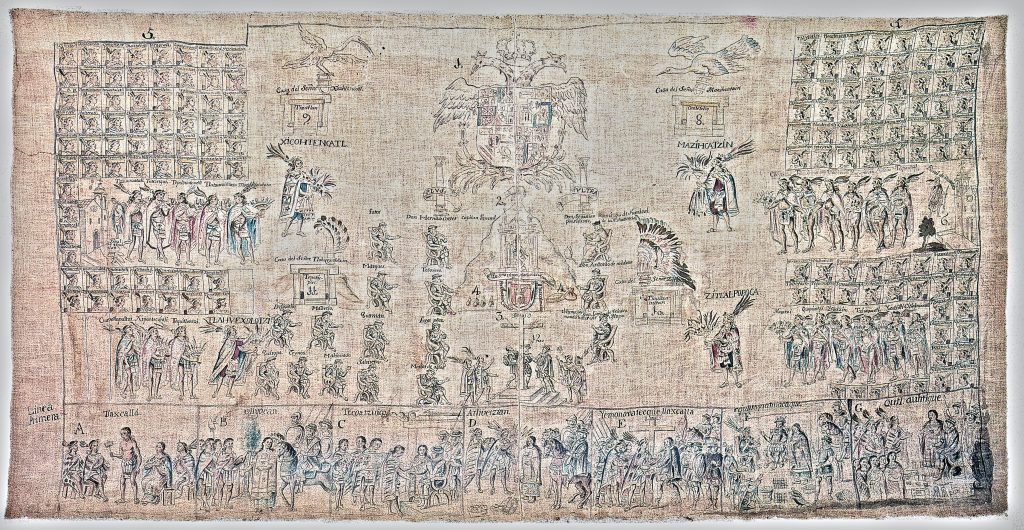
On September 18th 1519, the Spaniards arrived in Tlaxcala and were welcomed with celebrations and gifts, among which were the daughters of the four rulers from Tlaxcala. Cortés wanted to impose the Christian faith and in the following days a priest baptized the rulers and their daughters. Moctezuma was terrified that his enemies from Tlaxcala and the Spaniards would make an alliance and he was constantly sending ambassadors to Tlaxcala under the protection of Cortés.
From the lands of Tlaxcala, the Spaniards were impressed by the huge 5,500 meter volcano Popocatépetl (‘the mountain that smokes’) that is still active today. One of his soldiers, Diego de Ordaz, was eager to climb the volcano and take a closer look at it. Since the natives seemed to be terrified by it Cortés thought it would be a good idea if one of his men climbed it and returned successfully as proof of their braveness. The chronicles mention that the natives went as far as a shrine devoted to the gods of the volcano and the Spaniards went on on their own, but when Ordaz climbed the volcano it started to throw out fumes, rocks and fire. They waited an hour after it stopped and then climbed to its mouth and saw the lava inside; they could also see the magnificent city of Tenochtitlán from above and the best routes to access it. The natives were very impressed by this act, and years later Ordaz requested from the Emperor the right to use a coat of arms depicting a volcano.
After spending more than twenty days in Tlaxcala recovering their strength and gathering information on Tenochtitlán and the best routes to get to it, the ambassadors of Moctezuma suggested to Cortés that he go to the holy city of Cholula, which was under Aztec control and located near Tlaxcala. The people of Tlaxcala disagreed, arguing that Moctezuma was setting a trap for them.
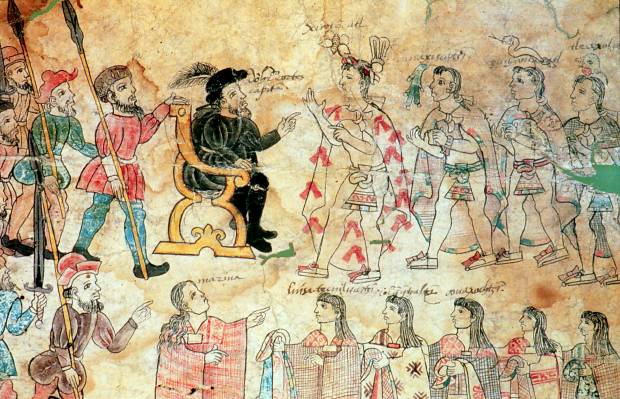 However, Cortés resolved to meet the Aztec ruler and on October 11th, he enlisted his forces that now included 100,000 warriors from Tlaxcala, and started their journey to Cholula. As soon as they got close to the city, they were received by priests who walked them into the holy city, where they provided them with comfortable accommodation and plenty of food. The warriors from Tlaxcala were not welcomed and so had to remain outside the city.
However, Cortés resolved to meet the Aztec ruler and on October 11th, he enlisted his forces that now included 100,000 warriors from Tlaxcala, and started their journey to Cholula. As soon as they got close to the city, they were received by priests who walked them into the holy city, where they provided them with comfortable accommodation and plenty of food. The warriors from Tlaxcala were not welcomed and so had to remain outside the city.
Something terrible happened in Cholula while the Spaniards were there. The native and Spanish chronicles tell different stories about what happened and that has been an issue of debate since the sixteenth century and we will not go deeper into it. Whatever the reasons, the Spaniards punished Cholula with extreme severity. It is generally accepted that Cortés called the nobles and warriors of Cholula to gather inside the main plaza, where he had previously located some of his men to block the access to the plaza and with a gunfire signal all of the Tlaxcala and Cempoala warriors rushed in and with the Spaniards they slaughtered them all. This terrible act is remembered by history as the massacre of Cholula, and changed the way the natives saw the Spaniards forever.
Cortés remained in Cholula for the following days reorganizing his forces, sending messengers to his men in Veracruz, appointing new leaders for the city, and most importantly he sent Moctezuma’s ambassadors back complaining about the latter’s ill treatment of the Spaniards, so now they would march into Tenochtitlán as enemies making as much damage as they possibly could. Moctezuma quickly sent back gold presents and much food and cocoa, and confusedly argued that he had not ordered any attack, and insisted that they should not continue to Tenochtitlán, which was a sterile and wasted land with not enough food and accommodation for the Spaniards.
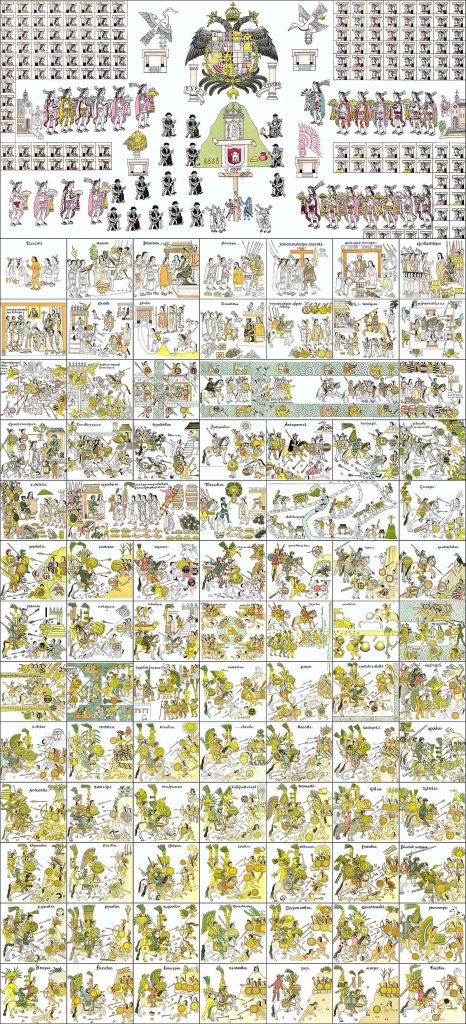
After further council with his captains and the leaders from Tlaxcala and Cempoala, they discussed the best route to take to continue. The Aztecs suggested going south and surrounding the volcanoes while those from Tlaxcala said it was probably a trap. Cortés then decided to take the hardest route by climbing the mountain range formed by the volcanoes Popocatépetl and Iztaccíhuatl, a route that was previously explored by Diego de Ordaz.
On November 1st. Cortés and his soldiers left Cholula and passed through Huejotzingo, where new ambassadors arrived with gifts and more persuasive words. However, Cortés was determined to see Tenochtitlán himself, so they started to climb the mountain range and spent the night between the two volcanoes, where they suffered from extreme cold. Today, the pass between both volcanoes is called The Pass of Cortés and it was from there that he got the first glimpse of the wonderful city of Tenochtitlán.
The next morning they started their descent towards Amecameca, where they were welcomed by the local cacique who complained about Moctezuma’s tyranny. Cortés spent two days in this city listening to the same complaints from ambassadors of the neighboring towns, and received them as allies. He and his men then took the road to Iztapalapa where they were received by a luxurious delegation headed by Cacama, Moctezuma’s nephew who was richly dressed and had many servants. His mission was to once and for all convince Cortés to turn back and return to Veracruz, which was of no use because the Spaniards were already on the doorsteps of TENOCHTITLAN.



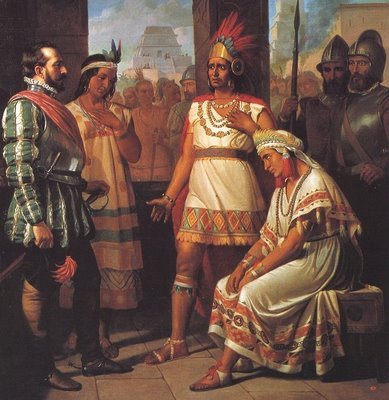
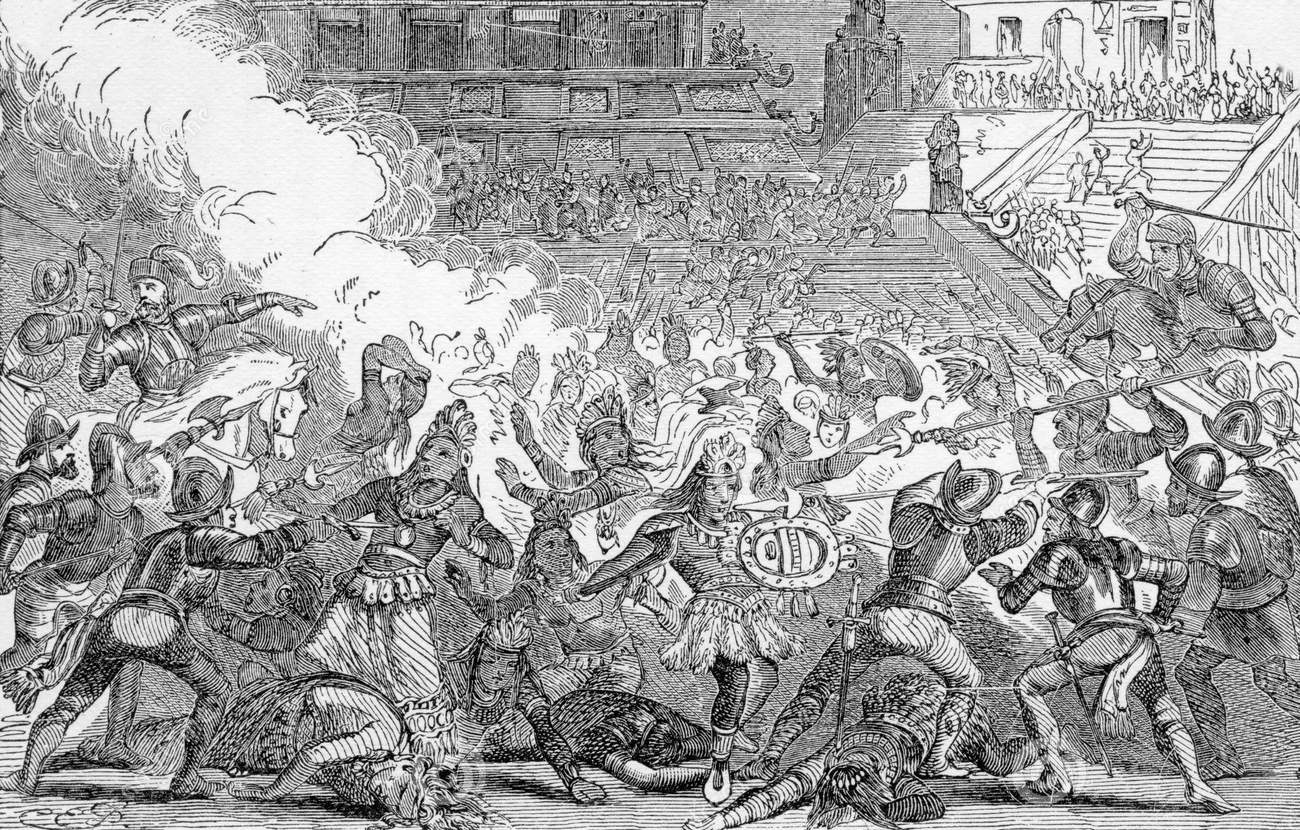 LINK TO THE CHOLULA MASSACRE.
LINK TO THE CHOLULA MASSACRE.